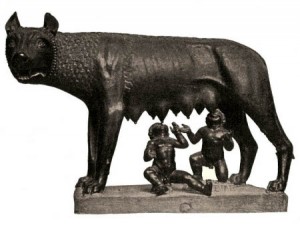February 2
If Candlemas be dry and fair
Half o winter’s yet to come and mair,
If Candlemas be wet and fowl
Half o winter’s gane at Yule.
If Candlemas Day be fair and bright
Winter will have another fight.
If Candlemas Day brings cloud and rain
Winter won’t come again.
Happy Marmota Monax Day!
Not every species gets a holiday. Holidays tend to revolve around the species homo sapien, but February 2 belongs to the marmota monax, aka Groundhog.
 In the days before meteorologists, when a few extra weeks of winter could mean the difference of feeding your family or not, cultures had to develop their own traditions of predicting the weather.
In the days before meteorologists, when a few extra weeks of winter could mean the difference of feeding your family or not, cultures had to develop their own traditions of predicting the weather.
The Celtic holiday Olmelc (also Imbolc) meant “ewe’s milk.” When livestock began lactating, Celts knew spring was just around the corner.
Other Europeans looked to the habits of hibernating mammals to determine signs of spring: bears were the chosen prognosticators in England and France, badgers in Germany.
“The badger peeps out of his hole,
If he finds snow, walks abroad
But if he sees the sun shining
he draws back into hole.”
(Let’s just assume it sounds better in German.)
However the practice was not attached to any specific date. Indeed, the idea of a bear coming out of hibernation–or any animal–precisely on February 2, was not only absurb, it was way too early.
Perhaps North Americans discovered that sleeping bears were not so friendly (and were very hungry) after being prodded awake in early February, which is why the American tradition leaned more toward the German way. However, instead of badgers, German settlers in 18th century America prodded woodchucks, aka groundhogs, to come out of their holes.
The resulting synthesis of these traditions in America was recored by James Morris, a shopkeeper in Morgantown, Pennsylvania.
“Last Tuesday, the 2nd, was Candlemas day, the day on which, according to the Germans, the Groundhog peeps out of his winter quarters and if he sees his shadow he pops back for another six weeks nap, but if the day be cloudy he remains out, as the weather is to be moderate.” — February 4, 1841
Today, the most famous groundhog in America is Punxsutawney Phil, who began officially predicting the weather for the proud people of Punxsutawney way back in 1886.
According to the president of the Punxsutawney Groundhog Club in 1978,
“In 92 years of Punxsutawney Phil’s emergence, he has never, never, never been wrong.”
Statistics say another thing. According to stormfax.com, Phil has actually predicted the coming of spring correctly a whopping 39% of the time. This is 2% better than the average Canadian groundhog, but still not inspiring considering the 50/50 call.
+ + +
Our lives are far less dependent on the weather than in ancient and medieval times. But new age religions have created a resurgence of Imbolc and other seasonal pagan rituals, focusing instead on the purification of the spirit and on the connectivity between all living things.

In North America, the melting pot of all cultures, February 2nd stands out as a perfect example of ancient rituals from Europe and Asia morphing into a truly bizarre amalgamation. The unusual collection of traditions that survive as Groundhog Day makes it the platypus of holidays.
Hmm…Platypus Day…
*google search*
Darn, not the first to think of it. According to http://alum.wpi.edu/~wes/holiday.htm, Platypus Day is February 2. Looks like Phil’s got competition!
Maria Lichtmess – German traditions in February
Groundhog Day
February Facts, Customs and Traditions





 In the days before meteorologists, when a few extra weeks of winter could mean the difference of feeding your family or not, cultures had to develop their own traditions of predicting the weather.
In the days before meteorologists, when a few extra weeks of winter could mean the difference of feeding your family or not, cultures had to develop their own traditions of predicting the weather.








